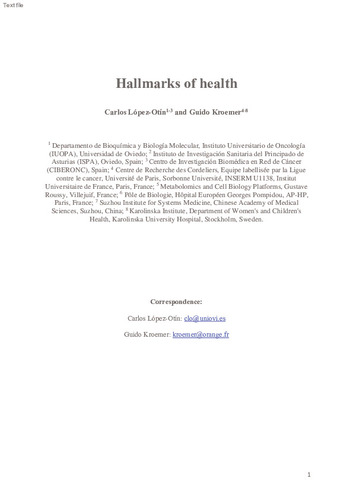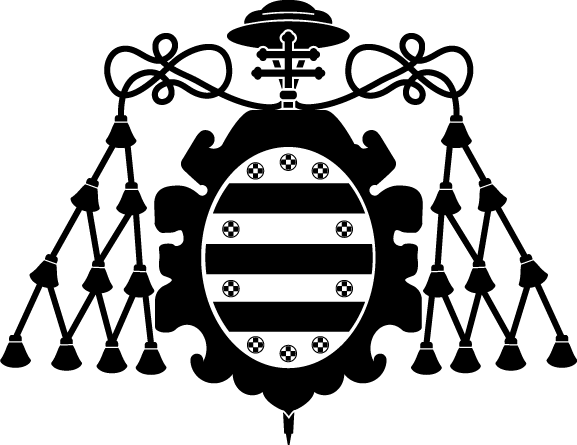Hallmarks of Health
Autor(es) y otros:
Fecha de publicación:
Versión del editor:
Citación:
Descripción física:
Resumen:
Health is usually defined as the absence of pathology. Here, we endeavor to define health as a compendium of organizational and dynamic features that maintain physiology. The biological causes or hallmarks of health include features of spatial compartmentalization (integrity of barriers and containment of local perturbations), maintenance of homeostasis over time (recycling and turnover, integration of circuitries, and rhythmic oscillations), and an array of adequate responses to stress (homeostatic resilience, hormetic regulation, and repair and regeneration). Disruption of any of these interlocked features is broadly pathogenic, causing an acute or progressive derailment of the system coupled to the loss of numerous stigmata of health.
Health is usually defined as the absence of pathology. Here, we endeavor to define health as a compendium of organizational and dynamic features that maintain physiology. The biological causes or hallmarks of health include features of spatial compartmentalization (integrity of barriers and containment of local perturbations), maintenance of homeostasis over time (recycling and turnover, integration of circuitries, and rhythmic oscillations), and an array of adequate responses to stress (homeostatic resilience, hormetic regulation, and repair and regeneration). Disruption of any of these interlocked features is broadly pathogenic, causing an acute or progressive derailment of the system coupled to the loss of numerous stigmata of health.
ISSN:
Patrocinado por:
This article is dedicated to the memory of Beth Levine. We apologize for omitting relevant works and citations due to space constraints. We acknowledge all members of our laboratories for helpful comments and support during the elaboration of this manuscript. We thank Salvador Aznar-Benitah, Clea Barcena, Adolfo A. Ferrando, Lorenzo Galluzzi, Alejandro Lucia, Franck Madeo, Pedro M. Quiros, Guadalupe Sabio, and Laurence Zitvogel for critical reading of the manuscript. C.L.-O. is supported by grants from the European Research Council (ERC Advanced Grant, DeAge), FEDER/Ministerio de Ciencia, Innovacion y Universidades (SAF2017-87655-R), Instituto de Salud Carlos III, and "la Caixa'' Foundation (HR17-00221). The Instituto Universitario de Oncologia is supported by Fundacion Bancaria Caja de Ahorros de Asturias. G.K. is supported by the Ligue Contre le Cancer (equipe labellisee), Agence National de la Recherche (ANR)-Projets blancs, Association pour la Recherche sur le Cancer (ARC), Association Ruban Rose, Canceropole Ile-de-France, Chancelerie des universites de Paris (Legs Poix), Fondation pour la Recherche Medicale (FRM), a donation by Elior, European Research Area Network on Cardiovascular Diseases (ERA-CVD, MINOTAUR), Gustave Roussy Odyssea, the European Union Horizon 2020 Project Oncobiome, Fondation Carrefour, Institut National Du Cancer (INCa), Inserm (HTE), Leducq Foundation, the LabEx ImmunoOncology, the RHU Torino Lumiere, the Seerave Foundation, the SIRIC Stratified Oncology Cell DNA Repair and Tumor Immune Elimination (SOCRATE), and the SIRIC Cancer Research and Personalized Medicine (CARPEM).
Colecciones
- Artículos [37556]
- Bioquímica y Biología Molecular [276]
- Investigaciones y Documentos OpenAIRE [8424]
Ficheros en el ítem





